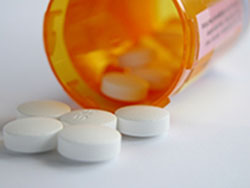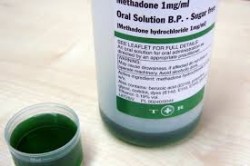Call (800) 570-0298 (Who Answers?) to find a heroin treatment center and learn more about your treatment options.
Medications Used in Opiate Addiction Treatment

Opiate addicts have an overwhelming need to feed their cravings for opiates and this can last for months after their last dose. The first step is to get the person off of the opiates and to do this they must undergo some form of opiate detox.
Choosing an Opiate Addiction Treatment
The person must choose the type of detox program most suitable for them based on safety, effectiveness potential, preferences, and treatment goals. Some choose a short term detox followed by formal treatment or a medically assisted opiate treatment program that gradual weans them from opiate use with medications such as methadone or buprenorphine (Subutex, Suboxone).
The severity of the addiction, prior history of relapse, co-occurring disorders, and other unique aspects are considered in the initial intake to help determine appropriate treatment measures. Formal treatment involves counseling and behavioral therapies to guide the person through the programs and which vary in intensity, setting, and services offered.

Opiate Addiction Detox Treatment
Opiate detox involves the supervision and care of medical experts and staff that can support the person as they go through withdrawals safely. Medications to control nausea, vomiting, diarrhea, and pain may be administered along with medications such as clonidine, Klonopin, or benzodiazepines to provide comfort, relax the person, prevent seizures, and counteract severe depression. In severe cases an opioid agonist such as methadone or partial agonist such as buprenorphin may be used for a couple of days reducing the dosage until the person is stable.
Medications Used in Opiate Addiction Treatment
Methadone has been the most effective medication for use in medically assisted treatment programs. When adequate doses are administered, methadone works as an agonist drug to occupy certain opioid receptors in the brain and reduce cravings, withdrawals, and block other opiate effects. It is a long lasting synthetic opiate that allows the user to sustain a steady state for 24 hours or longer without the repeat cycles of intoxication and withdrawals that are so disturbing to opiate addicts.
Methadone improves health and reduces needle sharing and behaviors commonly associated with opiate addictions. According to the Center for Substance Abuse Treatment, "Studies also have found that methadone maintenance treatment reduces criminality, noncompliance with HIV/AIDS therapy, seroconversion to HIV/AIDS, and mortality associated with opioid addiction.
Buprenorphine is a partial agonist and brand names include Subutex or Suboxone. It activates opioid receptors, but, produces less opiate effects. It relieves cravings without producing the euphoria or dangerous side effects of opiates and has a maximum limit on dosage effects. Taking more buprenorphine reduces opiate abuse and these programs may be preferred by some individuals.
